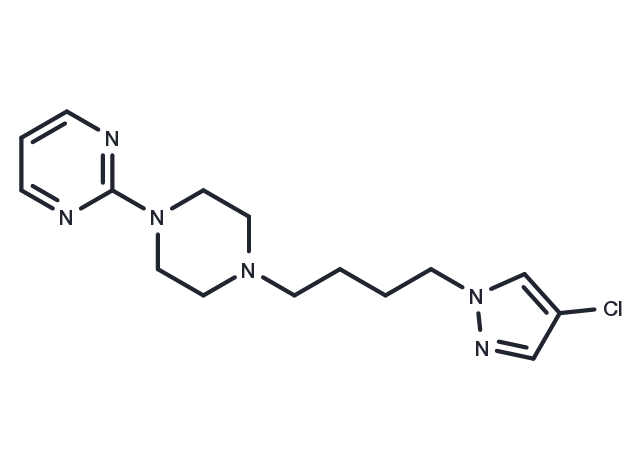Powder: -20°C for 3 years | In solvent: -80°C for 1 year


Lesopitron is an anxiolytic with pre- and postsynaptic 5-HT1A agonist activity and is more effective than 5-HT1A agonists in rat social interaction and marmoset anxiety models. lesopitron counteracts benzodiazepine withdrawal-induced anxiety in rodents with low acute toxicity and does not potentiate the effects of alcohol or barbiturates.

| Pack Size | Availability | Price/USD | Quantity |
|---|---|---|---|
| 1 mg | In stock | $ 143.00 | |
| 5 mg | In stock | $ 360.00 | |
| 10 mg | In stock | $ 530.00 | |
| 25 mg | In stock | $ 859.00 | |
| 50 mg | In stock | $ 1,180.00 | |
| 100 mg | In stock | $ 1,590.00 | |
| 500 mg | In stock | $ 3,190.00 | |
| 1 mL * 10 mM (in DMSO) | In stock | $ 358.00 |


| Description | Lesopitron is an anxiolytic with pre- and postsynaptic 5-HT1A agonist activity and is more effective than 5-HT1A agonists in rat social interaction and marmoset anxiety models. lesopitron counteracts benzodiazepine withdrawal-induced anxiety in rodents with low acute toxicity and does not potentiate the effects of alcohol or barbiturates. |
| In vivo |
Lesopitron (30 micrograms kg-1, i.p.) administered at a dose that induces anxiolytic behavior in rats markedly reduced 5-HT levels (to 45% of the basal value) in cortical perfusates, having no effect on 5-HIAA, DOPAC and HVA.[1] Intraraphe administration of lesopitron (10 microM) caused a decrease incortical 5-HT levels (the effect being of the same order as that obtained after systemic injection), with no effect on 5-HIAA, DOPAC and HVA.[1] |
| Molecular Weight | 320.82 |
| Formula | C15H21ClN6 |
| CAS No. | 132449-46-8 |
Powder: -20°C for 3 years | In solvent: -80°C for 1 year
DMSO: 3.21 mg/mL (10 mM), Sonication is recommended.
You can also refer to dose conversion for different animals. More
bottom
Please see Inhibitor Handling Instructions for more frequently ask questions. Topics include: how to prepare stock solutions, how to store products, and cautions on cell-based assays & animal experiments, etc.
Lesopitron 132449-46-8 GPCR/G Protein Neuroscience 5-HT Receptor inhibitor inhibit
